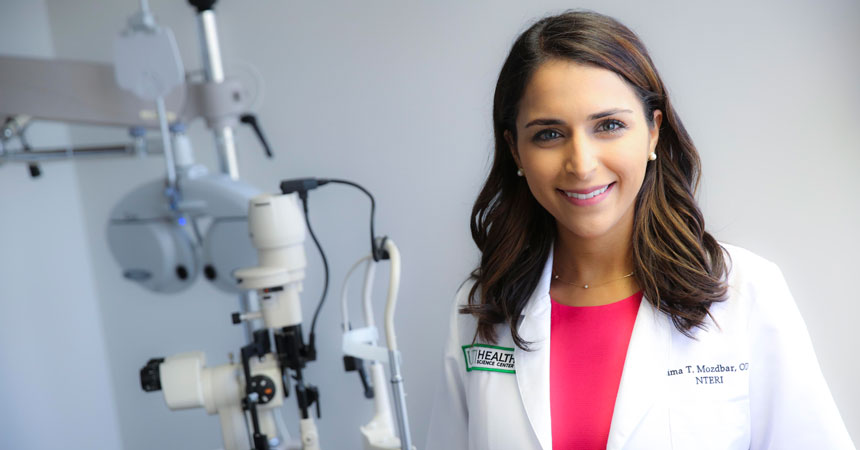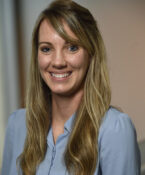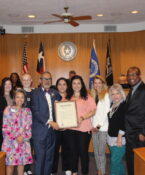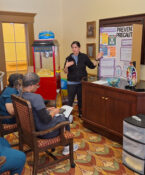Ophthalmic clinic opens in Health Pavilion to provide diabetic eye care
By Jan Jarvis
Zainulabedin Hashem walked out of the ophthalmic clinic with a new prescription and a sense of relief that his diabetes had not damaged his vision.
“I have had diabetes for 30 years and it affects my vision,” he said.
The North Richland Hills diabetic is among the first patients to receive care at the new ophthalmic clinic at UNT Health Science Center.
Patients who are treated in the UNTHSC clinics are now just an elevator ride away from getting an ophthalmic examination. The eye clinic is located on the fifth floor of the Health Pavilion.
Initially, the clinic will serve patients with diabetes, who, like Hashem, require eye examinations to evaluate for diabetic eye disease. It will also be the center of clinical ophthalmic research projects.
The four-room clinic houses $500,000 in cutting-edge equipment that makes it possible to manage ocular diseases such as diabetic retinopathy, glaucoma, age-related macular degeneration and cataracts – all common eye diseases that can lead to vision loss.
“We’re concentrating on these diseases first because that’s where the greatest need is,” said Abe Clark, PhD, Executive Director of the North Texas Eye Research Institute and Regents Professor, Pharmacology & Neuroscience and Medical Education.
The clinic also offers novel dry eye treatments for conditions such as meibomian gland dysfunction and blepharitis.
“Diabetics are at high risk for ocular complications and diabetic retinopathy is now the leading cause of blindness in working-aged Americans,” said Sima Mozdbar, OD, Director of the UNTHSC Clinical Ophthalmic Research Institute and Assistant Professor in the North Texas Eye Research Institute and Pharmacology and Neuroscience Department.
In the early stages of diabetic retinopathy, patients might have no symptoms and still see 20/20, which is why routine diabetic eye exams are crucial in detecting diabetic retinopathy in a timely manner, before it affects vision permanently.
Of an estimated 285 million people with diabetes worldwide, approximately one third have signs of retinopathy. Diabetic retinopathy disproportionately affects Mexican Americans and African Americans at higher rates.
“By building this clinic within the existing UNTHSC Health infrastructure, improved access for these patients will hopefully increase compliance with medical eye care and allow for earlier detection of conditions such as diabetic retinopathy,” Dr. Mozdbar said.
The role of the clinic will extend beyond providing clinical care, as there are plans to initiate clinical research projects at this location.
Drs. Clark and Mozdbar are planning to evaluate retinal biomarkers in Alzheimer’s disease as part of a collaboration with Drs. Sid O’Bryant and Leigh Johnson of the Institute of Translational Research. Their research will become part of the Alzheimer’s Disease in the Primary Care (ADPC) setting study now underway.
In addition to serving patients and advancing research, the clinic will also provide UNTHSC students with the opportunity to participate in clinical eye care and eye research.
“They’ll learn about the clinical diagnosis of various eye diseases, as well as how pathology develops and what treatments are available,” Dr. Clark said.
The clinic offers many benefits beyond caring for patients.
“It’s an opportunity for teaching, advancing clinical research and treating patients,” Dr. Clark said. “It’s a win, win, win.”






Social media